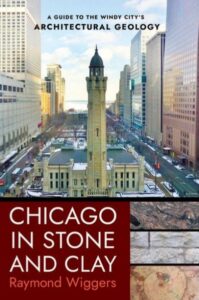 A few years ago I had the privilege of participating in an urban geology field course in downtown Portland, Oregon that was presented by the Geological Society of the Oregon Country. Prior to a friend telling me about the course, it had not occurred to me that there were geological – as well as paleontological, as the prevalence of fossils in the building materials of many stone structures is truly remarkable – discoveries to be made through the examination of buildings, public fountains, sidewalks, and other architectural structures. Needless to say, my eyes were very much opened indeed and continue to remain so today whenever I’m near a stone structure and have a hand lens in my pocket (which I more or less always do).
A few years ago I had the privilege of participating in an urban geology field course in downtown Portland, Oregon that was presented by the Geological Society of the Oregon Country. Prior to a friend telling me about the course, it had not occurred to me that there were geological – as well as paleontological, as the prevalence of fossils in the building materials of many stone structures is truly remarkable – discoveries to be made through the examination of buildings, public fountains, sidewalks, and other architectural structures. Needless to say, my eyes were very much opened indeed and continue to remain so today whenever I’m near a stone structure and have a hand lens in my pocket (which I more or less always do).
For those living in or visiting Chicago, a very handy new guidebook to many of the geological discoveries to be made by examining a range of different buildings and other structures in that city has recently been published by Cornell University Press under their Northern Illinois University Press imprint: Raymond Wiggers‘ Chicago in Stone and Clay; A Guide to the Windy City’s Architectural Geology.
Written at a level that is readily accessible to a wide range of non-specialist readers and structured as a field guide organized by neighborhood, this new guidebook includes a variety of office buildings, churches, schools, residences, and other structures, each of which is described and its relevant geological content indicated and explained.
As one who has had his eyes opened to the unexpected wonders to be found as the result of staring closely and intently as a stone wall, I very much hope that my readers will take the opportunity to investigate this handy new book, as well as – for those not in the Chicago area itself – to investigate their own local stone edifices to discover what geological surprises they may hold.
